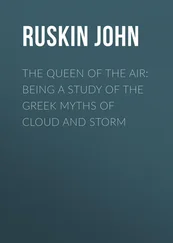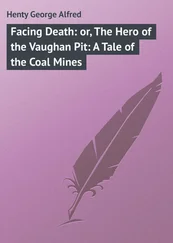George Dodd - The History of the Indian Revolt and of the Expeditions to Persia, China and Japan 1856-7-8
Здесь есть возможность читать онлайн «George Dodd - The History of the Indian Revolt and of the Expeditions to Persia, China and Japan 1856-7-8» — ознакомительный отрывок электронной книги совершенно бесплатно, а после прочтения отрывка купить полную версию. В некоторых случаях можно слушать аудио, скачать через торрент в формате fb2 и присутствует краткое содержание. Жанр: foreign_antique, foreign_prose, на английском языке. Описание произведения, (предисловие) а так же отзывы посетителей доступны на портале библиотеки ЛибКат.
- Название:The History of the Indian Revolt and of the Expeditions to Persia, China and Japan 1856-7-8
- Автор:
- Жанр:
- Год:неизвестен
- ISBN:нет данных
- Рейтинг книги:3 / 5. Голосов: 1
-
Избранное:Добавить в избранное
- Отзывы:
-
Ваша оценка:
- 60
- 1
- 2
- 3
- 4
- 5
The History of the Indian Revolt and of the Expeditions to Persia, China and Japan 1856-7-8: краткое содержание, описание и аннотация
Предлагаем к чтению аннотацию, описание, краткое содержание или предисловие (зависит от того, что написал сам автор книги «The History of the Indian Revolt and of the Expeditions to Persia, China and Japan 1856-7-8»). Если вы не нашли необходимую информацию о книге — напишите в комментариях, мы постараемся отыскать её.
The History of the Indian Revolt and of the Expeditions to Persia, China and Japan 1856-7-8 — читать онлайн ознакомительный отрывок
Ниже представлен текст книги, разбитый по страницам. Система сохранения места последней прочитанной страницы, позволяет с удобством читать онлайн бесплатно книгу «The History of the Indian Revolt and of the Expeditions to Persia, China and Japan 1856-7-8», без необходимости каждый раз заново искать на чём Вы остановились. Поставьте закладку, и сможете в любой момент перейти на страницу, на которой закончили чтение.
Интервал:
Закладка:
The fortunes of two separate boat-parties must be traced. Lieutenant Delafosse, whose name has already been mentioned in connection with a gallant achievement in the intrenchment, has placed upon record the story of one boat’s adventure, shewing how it happened that he was among the very few who escaped the Cawnpore tragedy. After stating that nearly all the boats which attempted to descend the Ganges were either stopped one by one, or the persons in them shot down where they sat, he proceeds thus: ‘We had now one boat, crowded with wounded, and having on board more than she could carry. Two guns followed us the whole of that day, the infantry firing on us the whole of that night. On the second day, 28th June, a gun was seen on the Cawnpore side, which opened on us at Nujjubgurh, the infantry still following us on both sides. On the morning of the third day, the boat was no longer serviceable; we were aground on a sand-bank, and had not strength sufficient to move her. Directly any of us got into the water, we were fired upon by thirty or forty men at a time. There was nothing left for us but to charge and drive them away; and fourteen of us were told off to do what we could. Directly we got on shore the insurgents retired; but, having followed them up too far, we were cut off from the river, and had to retire ourselves, as we were being surrounded. We could not make for the river; we had to go down parallel, and came to the river again a mile lower down, where we saw a large force of men right in front waiting for us, and another lot on the opposite bank, should we attempt to cross the river. On the bank of the river, just by the force in front, was a temple. We fired a volley, and made for the temple, in which we took shelter, having one man killed and one wounded. From the door of the temple we fired on every insurgent that happened to shew himself. Finding that they could do nothing against us whilst we remained inside, they heaped wood all round and set it on fire. When we could no longer remain inside on account of the smoke and heat, we threw off what clothes we had, and, each taking a musket, charged through the fire. Seven of us out of the twelve got into the water; but before we had gone far, two poor fellows were shot. There were only five of us left now; and we had to swim whilst the insurgents followed us along both banks, wading and firing as fast as they could. After we had gone three miles down the stream [probably swimming and wading by turns], one of our party, an artilleryman, to rest himself, began swimming on his back, and not knowing in what direction he was swimming, got on shore, and was killed. When we had got down about six miles, firing from both sides [of the river] ceased; and soon after we were hailed by some natives, on the Oude side, who asked us to come on shore, and said they would take us to their rajah, who was friendly to the English.’ This proved to be the case; for Lieutenant Delafosse, Lieutenant Mowbray Thomson, and one or two companions, remained in security and comparative comfort throughout the month of July, until an opportunity occurred for joining an English force.
Although the boat-adventure just narrated was full of painful excitement, ending in the death of nearly all the persons by shooting or drowning – yet there is one still to be noticed more saddening in its character, for the sufferers were reserved for a worse death. The name of Sir Hugh Wheeler is connected with this adventure in a way not easily to be accounted for; Mr Shepherd and Lieutenant Delafosse were not witnesses of it, and no reliable personal narrative is obtainable from any one who was actually present when it occurred. The probability is, that Sir Hugh, although wounded in the intrenchment, did not die until the boat-expedition had commenced, and that the same boat contained his daughter and his (living or dead) body. At anyrate, this was the last the world could hear of a brave old soldier, who went to India fifty-four years before; who fought with Lord Lake before Delhi in 1804; who took an active part in the Punjaub war; and who had been military commander of the Cawnpore district from 1850 to 1857. It was also the last to be heard of Brigadier Jack, who commanded the Cawnpore cantonment; and of many brave English officers, from colonels down to ensigns, of both the English and the native regiments.
Whether the general was alive or dead, and by whomsoever accompanied, it appears certain that a large party rowed many miles down the Ganges. One account states that Baboo Rambuksh, a zemindar of Dowreea Kheyra near Futtehpoor, stopped the boats, captured the persons who were in them, and sent them in carts as prisoners back to Cawnpore. The names of Mr Reid, Mr Thomas Greenway, Mr Kirkpatrick, Mr Mackenzie, Captain Mackenzie, and Dr Harris, were mentioned in connection with this band of unfortunates; but accuracy in this particular is not to be insured. The narrative given by Nujoor Jewarree, the native afterwards examined by English officers at Cawnpore, was different in many points, and much more detailed. He stated that the boat in question, after proceeding some distance, got upon a sand-bank, where there was a severe encounter; the sepoys not only ran along the shore, but followed in boats shooting at the victims as soon as they got within musket-range, and receiving many fatal shots in return. A freshet in the river released the boat, and the voyage recommenced. Meanwhile, the probable escape of this party being reported to Nena Sahib, he ordered three companies of the 3d Oude infantry to pursue the boat, and effect a complete capture. The boat was soon after taken, and all the occupants seized as prisoners. ‘There came out of that boat,’ said Nujoor Jewarree, ‘sixty sahibs (gentlemen), twenty-five memsahibs (ladies), and four children – one boy and three half-grown girls.’ His story then proceeded to details which, if correct, shew that Sir Hugh Wheeler was in the boat, and still alive; for a contest ensued between Nena and some of the soldiers whether or not the old general should be put to death: many of the sepoys wishing to preserve his life.
It will become apparent to the reader, from the nature of the above details, that the true story of the boat-catastrophe at Cawnpore will probably never be fully told. All that we positively know is, that one portion of the wretched victims met their death in the river, by muskets, swords, and drowning; and that two other portions were carried back to a captivity worse even than that of the intrenchment.
The proceedings of Nena Sahib, after the iniquitous treachery of the 27th of June, bore evident relation to his own advancement as an independent chieftain. At sunset on that day he held a review of all the rebel troops around Cawnpore on a plain between the now deserted intrenchment and the Ganges. They appear to have consisted of five regiments of Bengal native infantry, two of Oude native infantry, one of Bengal cavalry, two of Oude cavalry, two of irregular cavalry, a battery of field-guns, besides sundry detachments of regiments, and marauders who became temporary soldiers in the hope of sharing pillage. Guns were fired in honour of the Nena as sovereign, of his brother as governor-general, and of an ambitious Brahmin as commander-in-chief, of the newly restored Mahratta kingdom. From day to day more troops joined his standard, after mutinying at various stations on all sides of Cawnpore. Twenty thousand armed men are said to have been in that city by the 10th of July; and as the Nena was very slow in awarding to them any of his ill-gotten wealth, they recompensed themselves by plundering the inhabitants, under pretext of searching for concealed Europeans. Cawnpore was thus plunged into great misery, and speedily had cause to lament the absence of its former masters. Nena created new offices, for bestowal upon those who had served him; and he ordered the neighbouring zemindars to pay to him the revenue that had wont to be paid to the Company. He caused to be proclaimed by beat of tom-tom, throughout Cawnpore and the surrounding district, that he had entirely conquered the British; and that, their period of reign in India having been completed, he was preparing to drive them out foot by foot. During this heyday of self-assumed power, he issued many remarkable proclamations, worthy of note as indications of his ambitious views, of his hopes as dependent on the mass of the native people, and of the stigma which he sought to throw on the British government. Some of these proclamations are given in full at the end of the present chapter. There are many facts which lend support to the supposition that this grasp at power and wealth was suggested to him by the gradual development of events. He probably entertained crafty designs and suppressed vindictiveness from the outset; but these did not shew themselves openly until the native troops at the cantonment had rebelled. Seeing a door opened by others, which might possibly lead him to power and to vengeance, he seized the occasion and entered.
Читать дальшеИнтервал:
Закладка:
Похожие книги на «The History of the Indian Revolt and of the Expeditions to Persia, China and Japan 1856-7-8»
Представляем Вашему вниманию похожие книги на «The History of the Indian Revolt and of the Expeditions to Persia, China and Japan 1856-7-8» списком для выбора. Мы отобрали схожую по названию и смыслу литературу в надежде предоставить читателям больше вариантов отыскать новые, интересные, ещё непрочитанные произведения.
Обсуждение, отзывы о книге «The History of the Indian Revolt and of the Expeditions to Persia, China and Japan 1856-7-8» и просто собственные мнения читателей. Оставьте ваши комментарии, напишите, что Вы думаете о произведении, его смысле или главных героях. Укажите что конкретно понравилось, а что нет, и почему Вы так считаете.












